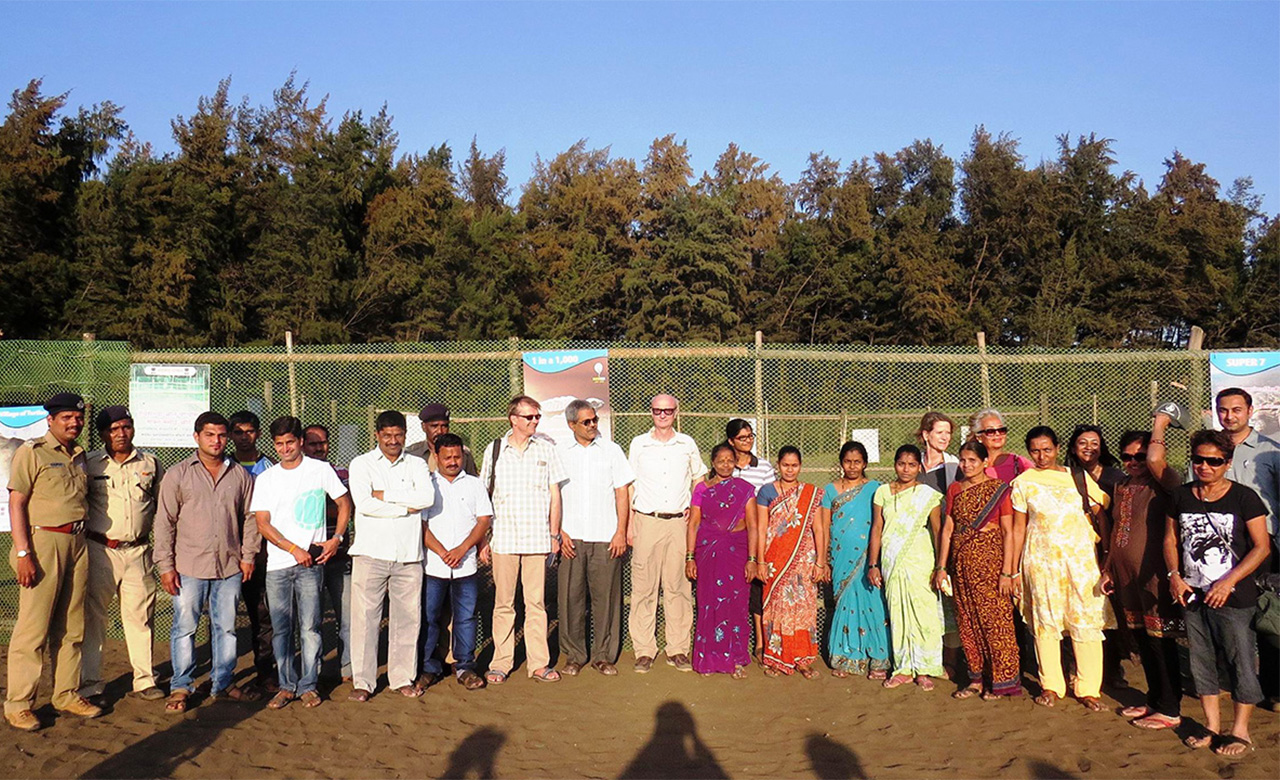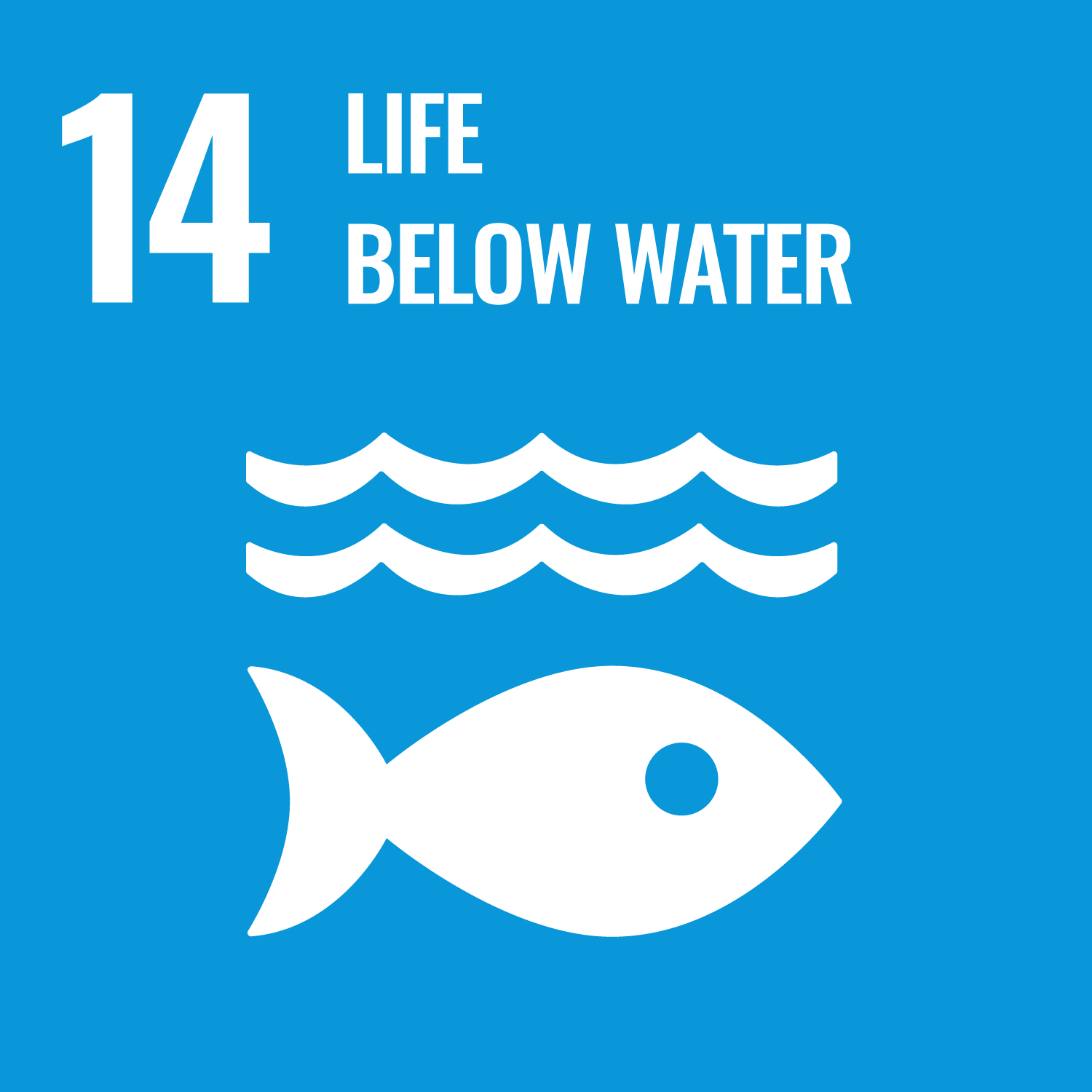Conservation and Sustainable Management of Coastal and Marine Protected Areas (CMPA)

OBJECTIVE
- To contribute to conservation and sustainable use of biodiversity in selected areas along the coast of India
PROJECT DESCRIPTION
With a coastline of more than 7,500 km, India is endowed with a diversity of coastal and marine ecosystems. These ecosystems provide numerous services and benefits including fisheries, coastal tourism, as well as protection provided by mangroves and sand dunes against natural disasters such as tsunamis and cyclones.
The CMPA project is part of a dedicated Indo-German Programme for enhancement of the conservation and sustainable use of India’s coastal biodiversity in line with the Convention on Biological Diversity (CBD). This will ultimately benefit the local population depending on healthy marine and coastal ecosystems. The CMPA project is being implemented at seven sites in four states – Goa, Gujarat, Maharashtra and Tamil Nadu.
The Project is funded by the German Federal Ministry for the Environment, Nature Conservation, and Nuclear Safety (BMU). It is implemented by the Ministry of Environment, Forests and Climate Change (MoEFCC), Government of India, and the Deutsche Gesellschaft für Internationale Zusammenarbeit (GIZ) on behalf of BMU.
SUCCESS STORIES
 ‘Kheldho’ float commissioned by the CMPA project steals the limelight at the Goa Carnival 2016
‘Kheldho’ float commissioned by the CMPA project steals the limelight at the Goa Carnival 2016
The CMPA Project used a glittering ‘Kheldho’ float at the Goa Carnival 2016 parade to draw attention to the declining biodiversity due to pollution from plastics, untreated sewage and overfishing. The Mudskipper, a remarkable fish species known in Goa as ‘Kheldho’, is ubiquitous to India’s estuaries and coastal mudflats. It spends more time on land than in water and its survival is closely linked to the health of estuaries and mangroves. Its disappearance could signal a degradation of the estuaries. With the float the project wanted to highlight the range of men-made environmental pressures that the rivers and backwaters suffer from and the impacts this has on local livelihoods such as fisheries.
The ‘Kheldho’ was made entirely out of waste: the body was formed from empty plastic bottles, each of which being fitted with an LED light that gave it its shiny appearance. The Mudskipper’s head was made from papier-mâché and oval cans intricately bound together. The tail consisted of flattened cans attached to a wire mesh and artistically arranged in yellow and red longitudinal series to give the impression of a rayed fin. The Carnival was held from February 6-9, 2016 and the floats presented in four different locations, with an estimated 400,000 spectators attending the parade this year.
VIDEO
PUBLICATIONS
- Introduction to the Coastal and Marine Biodiversity of Maharashtra
- Birds of Thane Creek
- Drones: The new technology used to monitor local ecosystems in Goa
- Mangroves
- CMPA
- Dr. Salim Ali Bird Sanctuary
- Goa Bird Festival
- A Booklet with Species’ Descriptions in Marathi
- Conservation and Sustainable Management
- CMPA Project Brief
- Human Capacity Development
- CMPA Project Supports Community Driven Biodiversity Documentation
- Birds to look out for Dr. Salim Ali Sanctuary
- Kingfishers of Chorao
- Turtle Conservation
- Knowledge Cafe
- The Coast of Maharashtra
- CMPA Technical Report Series No. 01. A Livelihood-based Analysis of Palk Bay
- CMPA Technical Report Series No. 02. Legal Framework for Conservation of Coastal and Marine Environment of India: A Review
- CMPA Technical Report Series No. 03. Ecological Status and Management of Dr. Salim Ali Bird Sanctuary and Estuarine Areas of Chorao Island: A Desk Review
- CMPA Technical Report Series No. 04. Ecological Status Assessment of Dr. Salim Ali Bird Sanctuary and Estuarine Areas of Chorao Island
- CMPA Technical Report Series No. 05. An Analysis of the Stakeholders in Dr. Salim Ali Bird Sanctuary, Chorao, Goa
- CMPA Technical Report Series No. 06. The Ecological Baseline Assessment of the Palk Bay
- CMPA Technical Report Series No. 07. Long-term Monitoring and Community-based Conservation of Olive Ridley Turtles in Odisha
- CMPA Technical Report Series No. 08. Representing Knowledge: Local Ecological Knowledge and Natural Resource Governance in India – A Summary Report
- CMPA Technical Report Series No.12. Community-supported management and conservation strategies for seagrass beds in Palk Bay
- CMPA Technical Report Series No. 11. Support to the development of a people’s biodiversity register and its use for identifying biodiversity heritage sites in the Chodan-Madel village
- CMPA Technical Report Series No. 13 Enhancing the effectiveness of conservation potential of marine mammals in Indian seas
- CMPA Technical Report Series No. 15. Effective and Equitable Solid Waste Management Final Report for a Sustainable SWM System in Velas
- CMPA Technical Report Series No. 17. Marine Turtle Festival Guidelines
- CMPA Technical Report Series No. 18. Report on Existing Beach Usage and Practices in Velas, Keslhi and Anjarle villages in coastal Maharashtra, for Conservation and Sustainable Management of Marine Areas (CMPA
- CMPA Technical Report Series No. 26. Capacity Needs Assessment for Participatory Management of Coastal and Marine Protected Areas in India: Media sector in Gujarat
- CMPA Technical Report Series No. 27. Capacity Needs Assessment for Participatory Management of Coastal and Marine Protected Areas in India: Media sector in Tamilnadu
- CMPA Technical Report Series No. 28. Capacity Needs Assessment for Participatory Management of Coastal and Marine Protected Areas in India: Media sector in Maharashtra
- CMPA Technical Report Series No. 29. Baseline study on the Biodiversity Awareness in Selected Marine and Coastal Areas in Gujarat
- CMPA Technical Report Series No. 30. Socio-economic Baseline Assessment at Gosabara Wetland Complex and Khijadiya Wildlife Sanctuary, Gujarat
- CMPA Technical Report Series No. 31. Floral Biodiversity Surveys for Baseline Assessment at Khijadiya Wildlife Sanctuary and Gosabara Wetland Complex in Gujarat
- CMPA Technical Report Series No. 32. Floral Biodiversity Monitoring to Support the Management Planning at Khijadiya Wildlife Sanctuary and Gosabara Wetland Complex in Gujarat
- CMPA Technical Report Series No. 33. Faunal Biodiversity Survey for Baseline Assessment of Khijadiya Wildlife Sanctuary in Gujarat
- CMPA Technical Report Series No. 34. Faunal Biodiversity Survey for Baseline Assessment of Gosabara Wetland Complex in Gujarat
- CMPA Technical Report Series No. 35. Avifaunal Survey to Understand Bird- Habitat Linkages at Khijadiya Wildlife Sanctuary and Gosabara Wetland in Gujarat
- CMPA Technical Report Series No. 37. Capacity Needs Assessment for Sustainable Management of Coastal and Marine Protected Areas in India
- CMPA Technical Report Series No. 38. A Compendium of Good Practices in Coastal and Marine Biodiversity Conservation in India
- CMPA Technical Report Series No. 40. Capacity Needs Assessment for Participatory Management of Coastal and Marine Protected Areas in India: Fisheries Sector
- CMPA Technical Report Series No. 42. Assessment of home-stays in Velas, Kelshi, and Anjarle
- CMPA Technical Report Series No. 43. Current Waste Management Practices in Velas, Kelshi and Anjarle villages in coastal Maharashtra, for Conservation and Sustainable Management of Coastal and Marine Protected Areas (CMPA)
- CMPA Technical Report Series No. 44. Project Completion Report. Implementation of Participatory Conservation of Biodiversity in Velas to Dabhol Coastal Stretch in Ratnagiri District of Maharashtra’
- CMPA Technical Report Series No. 46. Hydrology Study and Climate Change Vulnerability Assessment to inform Management Planning of Khijadiya Wildlife Sanctuary in Gujarat
- CMPA Technical Report Series No. 47. Hydrology Study and Climate Change Vulnerability Assessment to inform Management Planning of Gosabara Wetland Complex in Gujarat
- CMPA Technical Report Series No. 48. Rapid Biodiversity Assessment of Ansure Creek, Rajapur Ratnagiri, Maharashtra
- CMPA Technical Report Series No. 49. Conservation Education and Outreach Activities (Plan 2014-17) Velas-Anjarle, Ratnagiri District, Maharashtra
- CMPA Technical Report Series No. 50. Capacity Building Workshop on Biodiversity Management Committees and People’s Biodiversity Registers
- CMPA Technical Report Series No. 51. Biodiversity Conservation: A Literature Review
- CMPA Technical Report Series No. 52. A Bibliographic Review: Identification and Prioritization of Research Gaps inthe Palk Bay (PB), Tamil Nadu
- CMPA Technical Report Series No. 53. Review of Status of Marine National Park, Jamnagar: Evolving a Vision Statement for Management of MNP
- CMPA Technical Report Series No. 55 .Implementation Strategies for Maharashtra
- Key achievements in Gujarat
- Sustainable Tourism Development in Support of the GIZ project “CMPA”
- Report on the Conceptualization and Supervision of a Harmonized Approach to the Implementation of Baseline Studies at Selected Project Pilot Sites
- (English)Trainer’s Guide: Participatory Methods of Training for Effective Content Delivery for the trainers of forest, fisheries and media sectors
- (Marathi)Trainer’s Guide: Participatory Methods of Training for Effective Content Delivery for the trainers of forest, fisheries and media sectors
- (Gujarati)Trainer’s Guide: Participatory Methods of Training for Effective Content Delivery for the trainers of forest, fisheries and media sectors
- Improving livelihood through turtle festival
- Coastal and marine Biodiversity park Airoli
- Better Management of Beach and Waste
- Facilitating establishment of Biodiversity Heritage Sites
- Thane creek Flamingo Sanctuary
- Capacity needs assessment for CMPA
- Key contributions in Gujarat
- Facilitating Training Institutions
- Community Driven biodiversity documentation
- Use of drone technology to map Chorao
- Kheldo- the Mudskipper
- COMPENDIUM OF COMPENDIUM OF Training Courses on Coastal and Marine Biodiversity and Marine Protected Areas in India
- CMPA Brochure
- CMPA Project Brief
- Training of Trainers
- Human Capacity Development (HCD) Approach of GIZ
- CONSERVATION AND SUSTAINABLE MANAGEMENT OF COASTAL AND MARINE PROTECTED AREAS (CMPA)
- Coastal and Marine Biodiversity and Protected Area Management
COUNTRY
India
DURATION
Aug 2012 - Jan 2018
Commission Agency
BMUV
SDG



